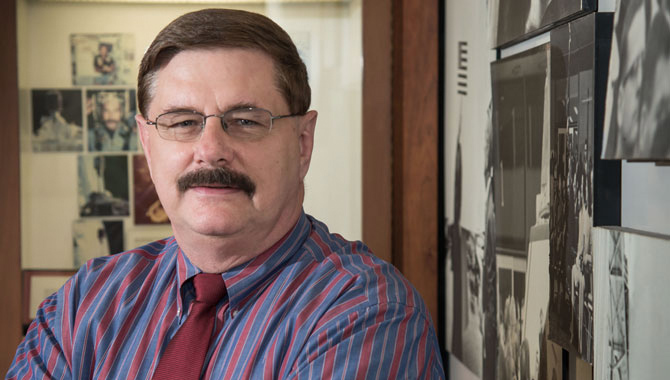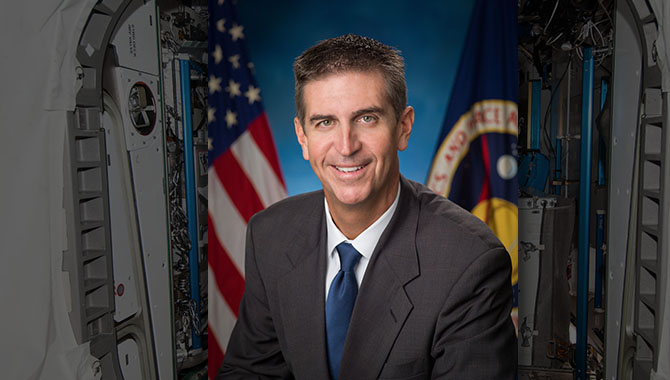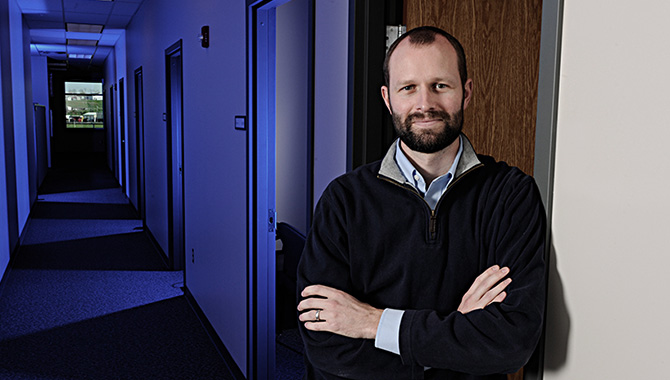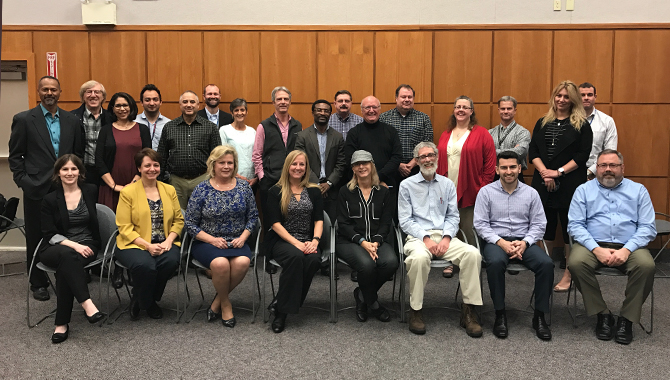
Johnson Space Center CKO Jim Rostohar.
Photo Credit: NASA
Jim Rostohar discusses knowledge sharing at NASA’s Johnson Space Center.
Jim Rostohar is Chief Knowledge Officer for NASA’s Johnson Space Center. Rostohar, who previously served as Johnson’s Communications and Public Affairs Director, is responsible for designing enterprise architecture, conducting research, leading implementation planning, and providing expert consultation and oversight for the center’s knowledge management activities. He conducts knowledge management campaigns, workshops and benchmarking as well as agency and industry collaboration efforts. Additionally, Rostohar manages Johnson’s History Office and serves as the center’s Quality Management Systems Representative, maintaining certification to the ISO 9000 and AS 9100 standards while evaluating the quality of processes, products and services.
How does a healthy knowledge sharing environment affect overall quality management at Johnson Space Center?
A healthy knowledge sharing environment really contributes to and enhances our quality management efforts. Many of our lessons learned, for example, have been beneficial to program representatives and decision makers in preparation for audits. And in some cases, our knowledge services have assisted in the development of corrective action plans.
Who are the biggest users of the knowledge services in your organization?
I would say programs and projects, as they are developing new hardware or trying to solve problems that may be similar to previous human spaceflight systems. We also partner with our Engineering Directorate and support their Engineering Academy with case studies and the development of classroom materials drawn from information in our databases.
Are there any successful knowledge efforts in your organization that you’d like to highlight?
Well, certainly, I think we are the league leader in the data science area, and we are starting to see folks from both inside and outside of NASA recognize these efforts. We have dramatically improved our search capability, which has led to some real success stories in terms of finding the appropriate information quickly. I would also say that we have placed a great emphasis on strengthening our case studies this year, and have goals to improve our Lessons Learned Program as well.
Do you have a favorite example of tangible benefits of knowledge sharing?
An engineer in the Orion Crew and Service Module Office was leading a team evaluating the Orion Crew Module Uprighting System (CMUS). The system is deployed after landing — to return the capsule to an upright position after splashdown. The system on Orion partially failed on the EFT-1 test flight when three of the five CMUS bags did not properly deploy. The Orion engineering team was working to improve the design. They were interested in finding some of the research that had been done during the Apollo program.
The team set out on an internal search that led them in several directions over two weeks. They were on an extremely tight schedule, so they used every avenue they could think of. Unfortunately, much of the early information that the team found was only available in photos. This, coupled with the understanding that much of the data was passed on person-to-person, created a data void.
The standard JSC search tool was hamstrung by an aging infrastructure designed to search for keywords and not necessarily in a contextual ranking. This was further hampered by the fact that searches produced large PDF format documents that would require substantial physical sorting and review.
The Knowledge Management Office had just begun testing IHS Goldfire (NASA Only) , so we thought we would offer it to the Orion Engineer. The Engineer spent three hours using our IHS Goldfire analytical search tool to run some of the same searches that he previously tried using the standard JSC search tool. The software returned results instantly. For example, after just a single search with one search term, the Goldfire tool immediately returned over 200 contextually relevant documents.
If this tool wasn’t available, the Orion team would have had to decide what level of program resources should be applied to develop and certify contingency measures for the Orion capsule. According to the Engineer, development of a test article would take two to three years and add an additional cost of several million dollars.
The addition of the Knowledge Management Office’s IHS Goldfire analytical search tool became a game-changer in terms of technical search capabilities. The Orion CMUS team quickly found the information they needed to help make gap analysis decisions based on the Apollo CMUS historical data.
What role does communication play in knowledge management and how much does it affect overall success of knowledge sharing activities?
I come from a communication background, so I feel communication is extremely important to knowledge sharing. The extent that we can effectively communicate the value of knowledge management is directly proportionate to our success. We are embarking on an awareness campaign at JSC to educate the center on what knowledge management is at a basic level, why it is important, and how we can help. We are going to try to reach deeper into some of the cracks and crevices to spread the word.
What are some of the most prominent knowledge challenges in your organization?
I think they are twofold: Getting people around the center to share their knowledge more readily and then being able to find it in a timely manner, when they need it. I think these are age-old issues, but we are trying to take a fresh new look at these challenges.
Employee turnover is a fact of life. However, this doesn’t mean that you can’t or shouldn’t try and minimize the damage it causes. Expertise is valuable, and we strive to preserve every ounce of it once somebody gives their notice to leave or retire. Preserving the expertise of departing employees is crucial for NASA, especially since we now have so many folks who are retirement-eligible. We take it seriously, and with the addition of the History Office to our shop, we have begun to capture the oral histories of key people prior to their retirement.
Are there knowledge management efforts — either within NASA or other organizations — that you find particularly remarkable or innovative?
I have been reading about how Goodyear Tire Company launched a project to put the company’s knowledge at everyone’s finger tips. They did it through what they call “Collect and Connect” behaviors, which lead to better and faster decision-making. These behaviors include sharing what you learn, finding what you need, and transferring experts’ “know-how” as key cornerstones. Their KM program has contributed to a 50 percent reduction in development cycle time. They also use a KM pyramid to help the company document other benefits and make them visible.
Are you observing any trends or cultural shifts that affect knowledge management going forward?
KM is shifting from control to cultivation, so that teams can share information organically. This kind of grassroots effort encourages engagement because employees are actively looking to contribute to their organizations by sharing their insights and ideas. I think that when social media elements are blended with knowledge management, everyone wins. People can communicate more intuitively and engage more effectively since social elements are now “second nature.”
The need for KM is becoming more immediate. Employees need access to an organization’s knowledge management system while they’re on the go, in a meeting, or even preparing for a presentation.
What’s the biggest misunderstanding that people have about knowledge?
Since coming to the KM community, I have observed that some individuals and organizations are collecting knowledge, but keeping it to themselves. The basic premise of knowledge sharing is . . . sharing! Knowledge isn’t helpful if you keep it to yourself or locked up within your small group. Through our awareness efforts we hope to change that in a positive way. I think for our KM program to continue to be successful, we have to look for problems and use our resources to help solve them.









